How Delhi Metro Manages to be a Model of Efficiency Every Day
Please note that this was originally appeared in the Economic Times.
Keeping the Delhi Metro running all day long requires not only regular maintenance of trains and tracks but also constant monitoring of the system during operational hours, so here’s a post taking you through the Delhi Metro’s operations control centre and maintenance depots to find out how it pulls off the feat daily:
With almost 100 trains running on the network, the operations control centre or OCC at Shastri Park is the nerve centre of the Delhi Metro. From here, every aspect of the Delhi Metro system is monitored—the time-table, speed, security, traction or electricity, the trains, auxiliary equipment like air-conditioning and ventilation system in underground tunnels, and even the crowds in the station.
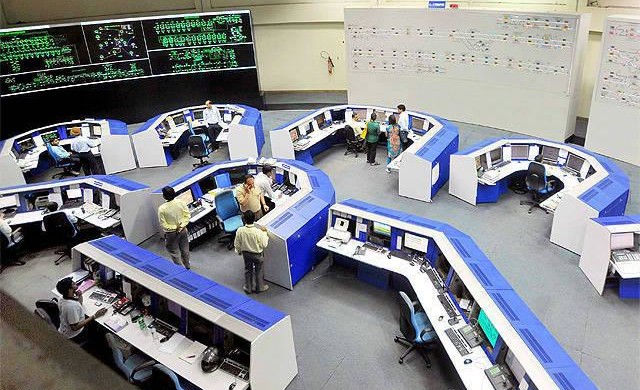
Shatri Park Operations Control Centre – photo: Economic Times, used under Creative Commons License (By 2.0)
As you walk into the room barefoot, lights are flashing on a giant screen even as a man talks into the system, keeping a close eye on another screen with multiple CCTV images from different stations flashing. With a fully automated rail system, it’s not surprising that Delhi Metro regards the OCC as its nerve centre. Delhi Metro’s trio of systems keeps the network running—ATP (automatic train protection), ATO (automatic train operation) and ATS (automatic train supervision)
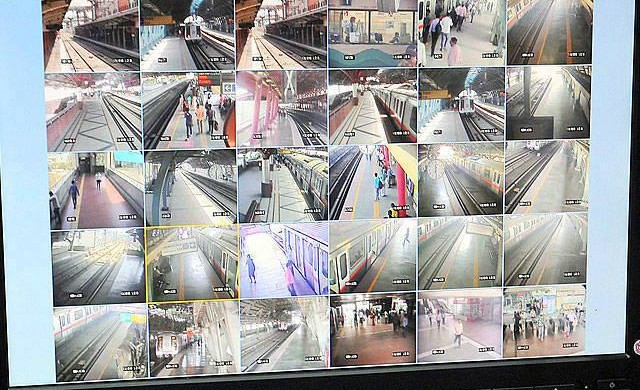
CCTV Cameras at Shastri Park metro station – photo: Economic Times, used under Creative Commons License (By 2.0)
Each train has a special identity, called the train ID. Of this, the first part is the destination code while the second is the train number. The screen at the OCC tracks the movement of the train through the track circuits—which are like electrical nodes which send the information to the OCC.
These are placed at intervals of 20m along the track. With no lag in the real time location of the train and the OCC circuit, every minute movement of the train is monitored by the system. The ATC (automatic train control) system, which controls the route of the train, works in tandem with the ATS, which interfaces between the train and the line side equipment like the track circuits.
Together, the system moves the train from one station to the next, ensuring that a minimum speed is maintained.
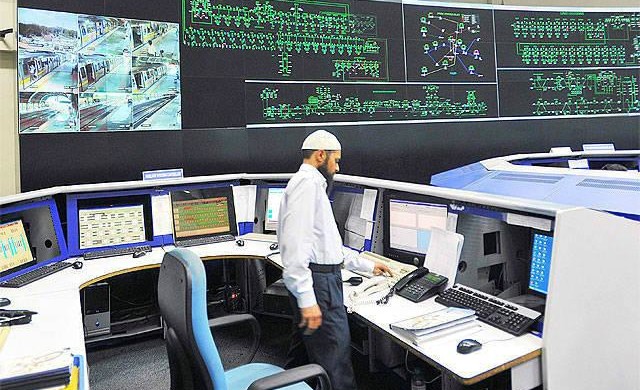
Control room at Shastri Park OCC – photo: Economic Times, used under Creative Commons License (By 2.0)
When the train stalls in the middle of the track, it’s from here at the OCC that engineers try to investigate what’s gone wrong in the system.
When a problem occurs—like when the track circuit ‘drops’, the train is navigated manually, as it falls off the OCC grid. Other common problems that crop up on the Delhi Metro network include the OHE malfunctioning or doors not closing in the trains
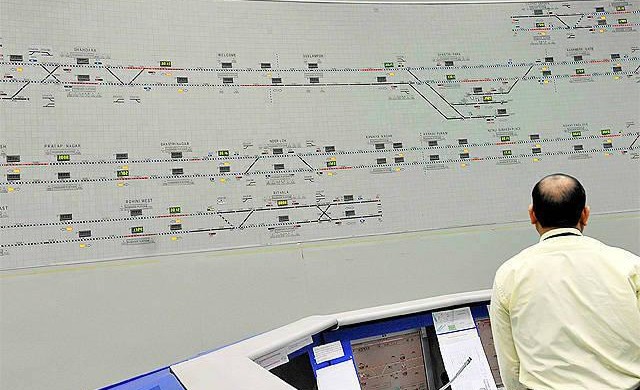
Control room at Shastri Park OCC – photo: Economic Times, used under Creative Commons License (By 2.0)
Considering the Rs 80 crore tag, it is not surprising that the Metro coaches are so jealously guarded. The train goes through physical checks every day, along with constant monitoring by a team of professionals, so that operation schedules can be maintained and the train doesn’t stop in the middle of the track.
As a maintenance and safety official of Delhi Metro Rail Corporation says, the trains are the much-monitored babies, not left alone for a single minute.
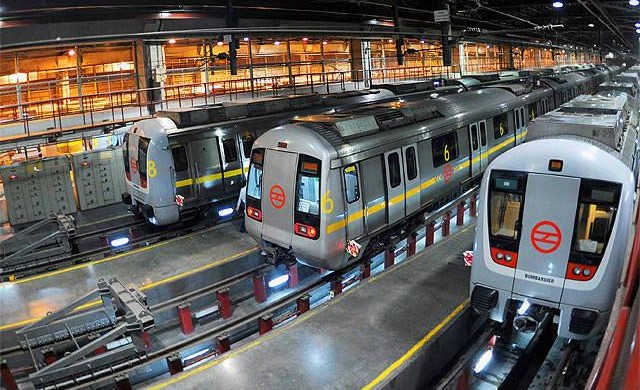
Khyber Pass Depot – photo: Economic Times, used under Creative Commons License (By 2.0)
With over 2 lakh litres of water being used every day, the depot at Khyber Pass in north Delhi may well be one of the most watered areas in Delhi. All that water is recycled for irrigation, say Delhi Metro officials. As you walk into the depot late at night, though, it’s the meticulous maintenance work going on that first strikes you.
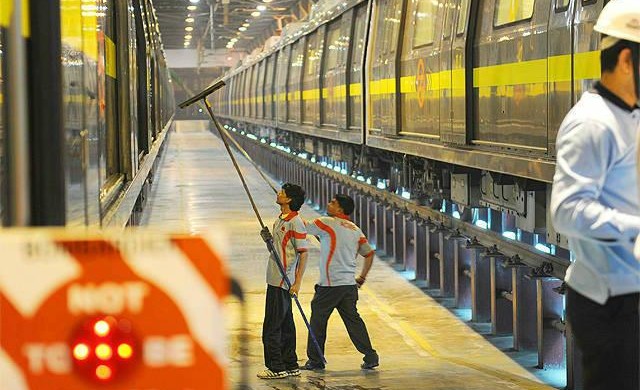
Khyber Pass Depot – photo: Economic Times, used under Creative Commons License (By 2.0)
The PPIO is the planning, progress and investigation organisation at the depot, which keeps the schedule of the train maintenance as well as does a physical check every day, based on a pre-determined schedule.
The third layer of checking is done by the train operator (TO), who not only gauges the operational running but also keeps an eye out for anything that requires a closer look once in the depot. In fact, the constant exchange of data between the PPIO and the OCC determines the maintenance plan of the train at the depot.
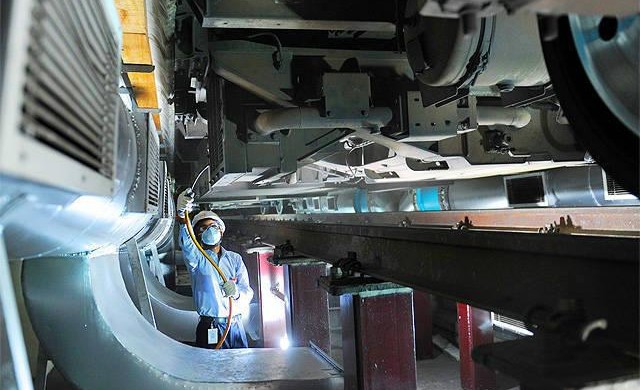
Khyber Pass Depot – photo: Economic Times, used under Creative Commons License (By 2.0)
The maintenance is broken up into parts: the under-frame, the interiors and the roof. ‘It’s not just scheduled maintenance. We also do active, preventive maintenance,’ says an official. The basic check is done every day at the depot.
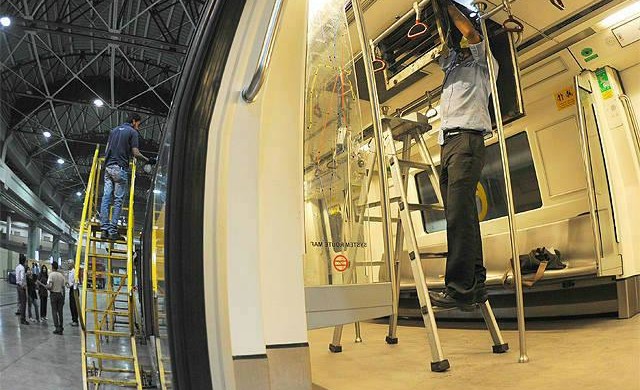
Khyber Pass Depot – photo: Economic Times, used under Creative Commons License (By 2.0)
If a problem is detected, it goes into the IBL or the workshop, depending on the snag. If the train is going into revenue service without any major maintenance being planned, it only goes through a routine cleaning.
If a thorough cleaning is scheduled —which is done every three days—then it will go through the automated washing process.
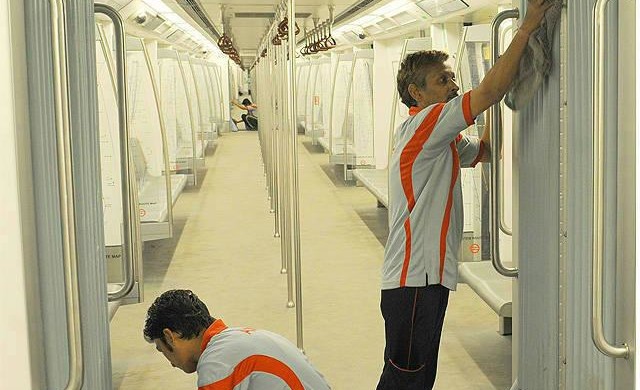
Khyber Pass Depot – photo: Economic Times, used under Creative Commons License (By 2.0)
The schedule is rigorous, say Delhi Metro officials. ‘The train runs approximately 400km every day, so maintenance is extremely important.’
There are three-day, 15-day, 45-day, 3-monthly, 6-monthly and annual schedules. In the basic mode, safety features of the under-frame, horn, wipers, headlights and announcement systems are checked.
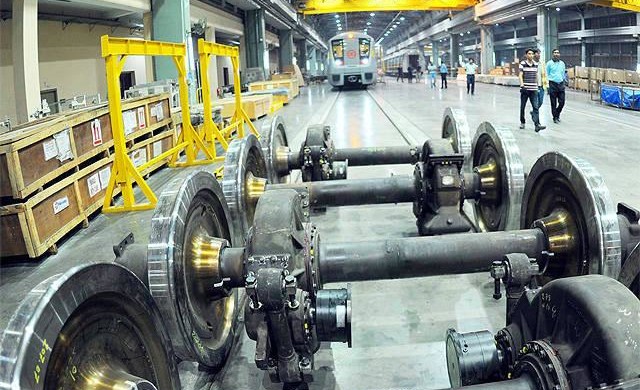
Khyber Pass Depot – photo: Economic Times, used under Creative Commons License (By 2.0)
After every 15 days, cleaning and measurement of the roof, the under-frame and interior features is the norm. The 45-day maintenance schedule includes cleaning, measurement, monitoring and part over-hauling.
The rest of the activities like replacement of oils are scheduled in the later maintenance.
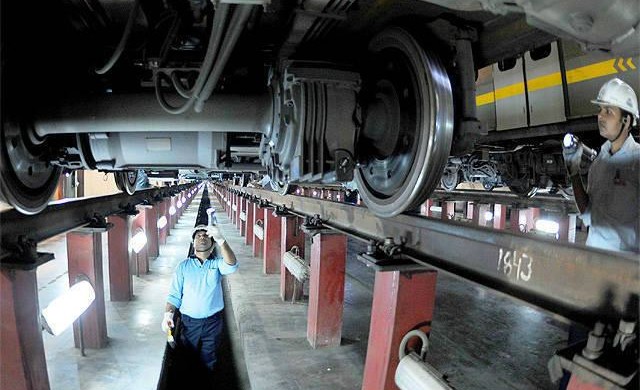
Khyber Pass Depot – photo: Economic Times, used under Creative Commons License (By 2.0)
The annual schedule is the most exhaustive, as by that time, the train has travelled more than a lakh kilometres. Maintenance of the wheels and the brakes is an important part of the schedule.
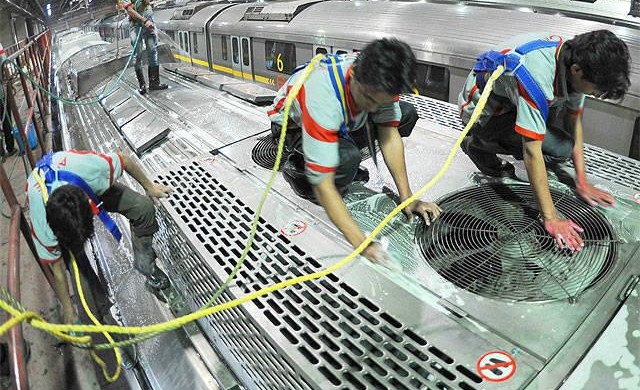
Khyber Pass Depot – photo: Economic Times, used under Creative Commons License (By 2.0)
The train is divided into the motor car and the driving trailer, both of which form a unit. The wheels on the DT need to be changed every eight-nine months while those of the motor car last 15-16 months.
Similarly, the brakes on the DT need to be changed every 45 days while those on the motor car last five months.
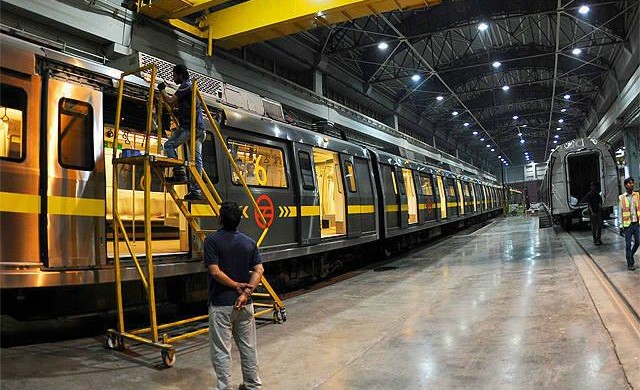
Khyber Pass Depot – photo: Economic Times, used under Creative Commons License (By 2.0)
The roof is also a delicate part and needs to be cleaned every 45 days.
‘The pantograph on the roof has a carbon coating, which sees regular wear and tear every day. To get rid of the carbon residue, the roof needs to be cleaned, so that corrosion does not occur,’ says an official.
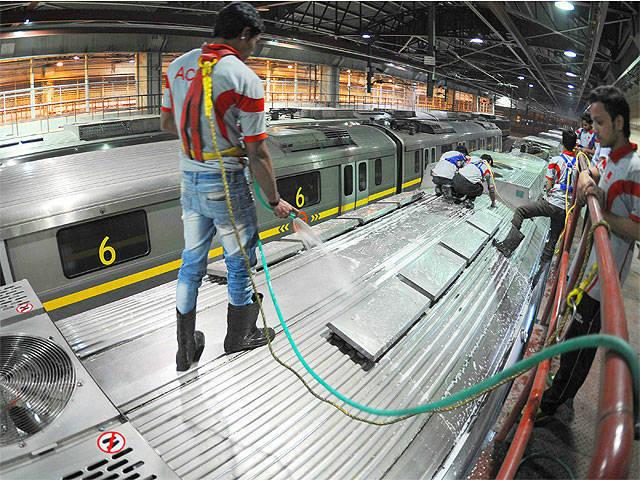
Khyber Pass Depot – photo: Economic Times, used under Creative Commons License (By 2.0)
Update: BBC Hindi released an excellent voice-over ‘video’ in August 2015. Watch it here: Excellent Voice-over on the Delhi Metro’s Maintenance.
– TMRG




Beautiful, a similar implementation on the regular railways would go a long way. I am sure, similar systems exist but they can do better.